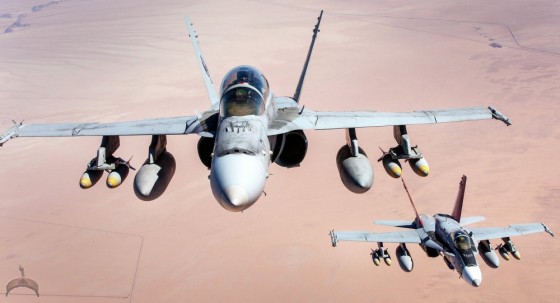The arriving of two US bomber jets on Taiwan on Wednesday has chafed China’s Foreign Ministry.
While the Pentagon says the planes endured mechanical inconvenience while flying a routine preparing activity, others see it as a political message, cautioning China to moderate its developing impact.
The Taiwan Relations Act of 1979 laid out strict guidelines for how the United States ought to manage the island. While Washington secretly considers Taiwan to be an autonomous country, China considers the island, just 140 miles from its shore, as its own region under the “one-China arrangement.”
China has affirmed army bases on an artificial island close to the debated Spratly islands, posturing yet another test for US abroad military, conciliatory and political impact. While the US has promised backing to Taipei, if it be assaulted, any military contact between the two is intensely scowled upon by Beijing. Which is the reason Wednesday’s arriving of two F-18s at the Tainan air base is so upsetting — and unusual.
“We have already made solemn representations to the US side,” China’s Foreign Ministry spokeswoman, Hua Chunying, said in a news briefing. “China demands that the United States strictly abide by the “one-China policy”…and cautiously and appropriately handle the incident.”
For its part, the Pentagon insists that the incident was an emergency situation, not intended as an act of defiance.
“Two F-18C Hornets…made a precautionary landing this morning at an airfield in southwestern Taiwan,” Marine Corps spokesman, Maj. Paul L. Greenberg,said, according to the Washington Times. “The cause of the mechanical issue which led to the precautionary landing is currently being examined. As soon as the necessary maintenance is performed, both aircraft will soon depart Taiwan.”
But the timing makes the Pentagon’ version of events highly suspect. Earlier this week, Chinese bombers underwent the People’s Liberation Army Air Force’s first exercises in the “west Pacific.” The flightpath took the H-6K bombers over the Bashi Channel, a waterway between Taiwan and the Philippines.
“The ‘emergency’ landing for two F/A-18 fighters at an air base in Taiwan, while perhaps unintended, does give China a significant signal of US resolve,” military analyst Rick Fisher told the Washington Times, “two days after China used its new H-6K nuclear cruise missile bomber in exercises intended to signal a threat to US forces in Guam.”
Especially given that the fighters could have just as easily landed at the Japanese airfield on Shimoji island, only 120 miles east.
The landings also seem timely given the recent rise in aggressive American rhetoric against the Chinese government. On Tuesday, the commander of the US Pacific Fleet warned an Australian naval conference audience about China’s construction of a “great wall of sand,” in reference to the artificial islands being built in the Spratly chain.
“When one looks at China’s pattern of provocative actions towards smaller claimant states…It’s no surprise that the scope and pace of building man-made islands raises serious questions about Chinese intentions,” Admiral Harry Harris Jr. said.
These allegations of Chinese aggression in the South China Sea appear to be causing a rise in American hostility. In March, the US Senate demanded that the Pentagon develop a strategy to counter the rise of Chinese influence in the region.
Wednesday’s incident isn’t even the first example of an aggressive US air presence in recent months. In February, the US moved its most advanced spy plane, the Poseidon P-8A, into the Philippines to monitor the region
No comments:
Post a Comment